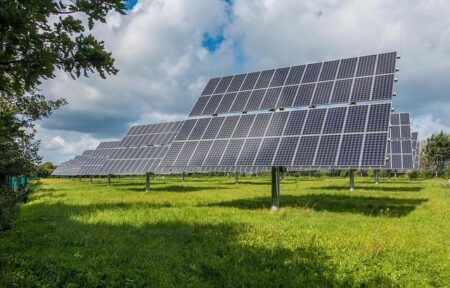Spain is grappling with a surge of devastating wildfires this summer, as increasingly severe heatwaves and prolonged drought conditions-linked to climate change-fuel uncontrollable blazes across the country. These fires have scorched thousands of hectares, forcing mass evacuations and overwhelming firefighting resources. Experts warn that the frequency and intensity of wildfires in Spain are on the rise, reflecting broader global trends tied to the ongoing climate crisis. This article examines the underlying causes, immediate impacts, and the urgent need for systemic action to address the environmental and social consequences of climate-induced disasters.
Rising Temperatures and Prolonged Droughts Create Perfect Conditions for Wildfire Outbreaks
Spain is currently grappling with an unprecedented wave of wildfires, ignited and intensified by a relentless combination of soaring temperatures and extended periods of drought. Experts warn that these conditions significantly reduce moisture levels in vegetation, turning forests and grasslands into tinderboxes primed for rapid ignition and uncontrollable spread. The country’s recent heatwaves, some reaching record-breaking highs, have strained natural ecosystems and overwhelmed firefighting resources, exacerbating the destruction inflicted on both rural and urban areas.
Key factors contributing to the wildfire crisis include:
- Prolonged dry spells reducing soil and plant moisture
- Increased frequency of heatwaves enhancing fire risk
- Shifts in wind patterns spreading flames swiftly over large areas
- Depleted groundwater reserves limiting firefighting capabilities
| Month | Average Temperature (°C) | Drought Severity Index | Wildfire Incidents |
|---|---|---|---|
| June | 32.5 | +3.8 (Extreme) | 124 |
| July | 34.1 | +4.2 (Extreme) | 198 |
| August | 33.7 | +3.9 (Extreme) | 175 |
Communities Face Displacement and Health Risks as Fire Seasons Intensify Across Spain
As wildfires rage across multiple regions in Spain, thousands of residents are being forced to abandon their homes, thrust into uncertainty amidst the encroaching flames. Rural villages once surrounded by vibrant forests now confront charred landscapes and the lingering threat of returning fires. Emergency shelters are operating at full capacity, struggling to meet the demands of displaced families. Local health services warn of the growing toll on physical and mental well-being, driven not only by smoke inhalation and burns but also by increased anxiety and stress. These fires, increasingly severe due to prolonged droughts and soaring temperatures linked to climate change, highlight the vulnerability of communities living in vulnerable ecological zones.
Public health officials emphasize several immediate risks faced by affected populations:
- Respiratory illnesses: Elevated levels of airborne particulates cause aggravated asthma and chronic bronchitis.
- Water contamination: Disrupted infrastructure raises concerns over potable water safety.
- Heat stroke and dehydration: Especially among elderly and children exposed during evacuations.
Authorities are calling for expanded healthcare resources and better fire prevention strategies as climate models predict an alarming increase in both fire frequency and intensity over the coming decades.
| Region | Fires Reported | People Evacuated | Air Quality Index |
|---|---|---|---|
| Andalusia | 27 | 1,450 | 185 (Unhealthy) |
| Castile and LeĂłn | 15 | 720 | 160 (Unhealthy) |
| Catalonia | 18 | 980 | 175 (Unhealthy) |
Urgent Calls for Government Action Emphasize Sustainable Land Management and Emergency Preparedness
As flames continue to ravage vast areas of Spain’s forests and rural lands, experts and community leaders are calling for immediate and comprehensive government intervention. The escalating wildfire crisis, exacerbated by rising global temperatures and prolonged droughts, underscores the dire need for sustainable land management practices. Officials emphasize that preserving natural vegetation, restoring degraded soils, and implementing controlled burns could play vital roles in reducing the intensity and frequency of future fires. Without these measures, the risk of catastrophic wildfires will persist, threatening ecosystems, livelihoods, and public safety.
In parallel, a renewed focus on emergency preparedness is critical to safeguard vulnerable communities. Improved early warning systems, better coordination among firefighting units, and investment in resilient infrastructure are urgent priorities. Government agencies are urged to collaborate closely with scientists, local authorities, and residents to develop tailored response plans. The following table highlights the key action points proposed by wildfire experts:
| Action | Purpose | Expected Outcome |
|---|---|---|
| Forest Thinning | Reduce fuel load | Lower fire intensity |
| Community Evacuation Plans | Ensure timely safety | Minimized casualties |
| Satellite Monitoring | Early fire detection | Faster response times |
| Reforestation Programs | Restore ecosystems | Improved natural barriers |
- Investing in firefighter training and equipment upgrades
- Strengthening cross-border cooperation for resource sharing
- Raising public awareness on fire prevention strategies
Insights and Conclusions
As wildfires fueled by rising temperatures and prolonged droughts continue to ravage Spain, the urgency of addressing climate change becomes ever more apparent. The devastation underscores the need for comprehensive policies that prioritize environmental sustainability and community resilience. Without swift and coordinated action at both the national and international levels, the threat of increasingly severe wildfires will persist, posing continued risks to ecosystems, public health, and economic stability across the region.




